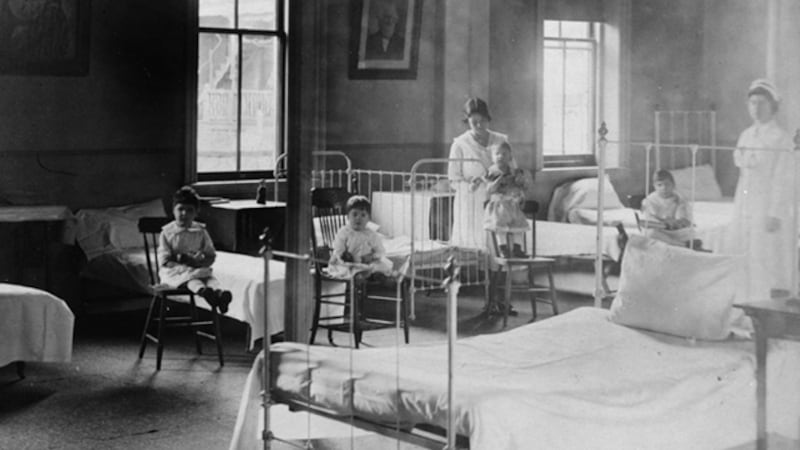Terrible times: Remembering the 1918 flu pandemic's impact on Vermont

The coronavirus pandemic has caused global shutdowns and killed nearly 25,000 worldwide as of Friday. But it's nowhere near the devastation caused a century ago by the Spanish Flu.
Despite its name, the virus started at a military base in Kansas in March 1918 and spread as men went to the front lines for World War I. One-third of all people worldwide were infected by it and it's credited with killing more than 100 million -- three times more than the war.
Very few people are alive who remember it, but Cat Viglienzoni found out there are similarities in our response now.
Michael Sherman knows how a pandemic can reshape a society. Not because he's a disease expert, but because he's a historian. "Crisis points are really interesting moments for historians to look at." Sherman said.
The former Vermont Historical Society director says without a doubt, it was a crisis. In 1918, no one was prepared for a virus that attacked suddenly with devastating impact. Upwards of 36,000 in Vermont were sickened by the virus. No part of the state was spared.
"I don't think there was a town that didn't have at least one case, so it was everywhere," Sherman said. "The hospitals were overcrowded. I think there were too many cases for the hospitals to deal with them."
Sherman says to add to the chaos, many doctors had gone to war. "Morticians had run out of coffins, so they were shipping bodies up to Burlington to go to their homes in wicker coffins. And they had to get the bodies out of them and send the coffins back because they were short on them," he said.
The Spanish Flu killed 1,700 people in Vermont in just a matter of weeks. Barre was one of the hardest-hit cities. With granite workers' lungs already weakened by silicosis, 175 people died. And 100 years later, people erected a monument in Hope Cemetery, where lines of graves honor the dead.
Spanish Flu was different because it killed younger people. Sherman made a chart showing the ages of those who died in 1918. "You see a big spike in the deaths up through age 30," he said.
A diary from Dorman Kent, a Montpelier man who worked to count the sick, captured the sense of panic: "Twenty-five have died in Barre today. The conditions are getting worse all the while. Terrible times!" Kent wrote.
Industry was shut down, towns canceled public meetings and gatherings. Mandated quarantines banned travel in or out and a statewide shutdown was imposed on October 4, 1918. "Society just kind of came to a grinding halt," Sherman said. He says it was lifted a month later.
The virus did return in 1919, but weaker. Recovery from it blended into the recovery from the war. While there would be other pandemics over the years -- Asian flu in the late 1950s, Hong Kong flu in the late 1960s, and more recently H1N1 in 2009, none ever came close to the Spanish Flu's toll. "That has not been repeated," Sherman said.
He says the coronavirus crisis has similar parallels to 1918 when it comes to the public's fear of the unknown. "I do get the sense of frustration about not knowing what to do, not having any sense of recourse to medicine as a help or an uncertainty about that," Sherman said.
But he says thanks to lessons learned and improvements in medicine, we are unlikely to see the same devastation now.
Although few remember the 1918 pandemic, Waterbury Center's Florilla Ames was a survivor. "There was a couple who lived up above, maybe a mile or two, young couple, they had a baby. They all died," Ames said back in 2017.
She just turned 109 earlier this month, but when Joe Carroll interviewed her for our Super Senior series, she told him the Spanish Flu was a memorable moment in her life and described neighbors dying. Her whole family got sick, but they were lucky and all recovered.
She, like many others, is staying inside now and limiting contact with others to stay safe from the coronavirus, so we were not able to interview her again for this story.















